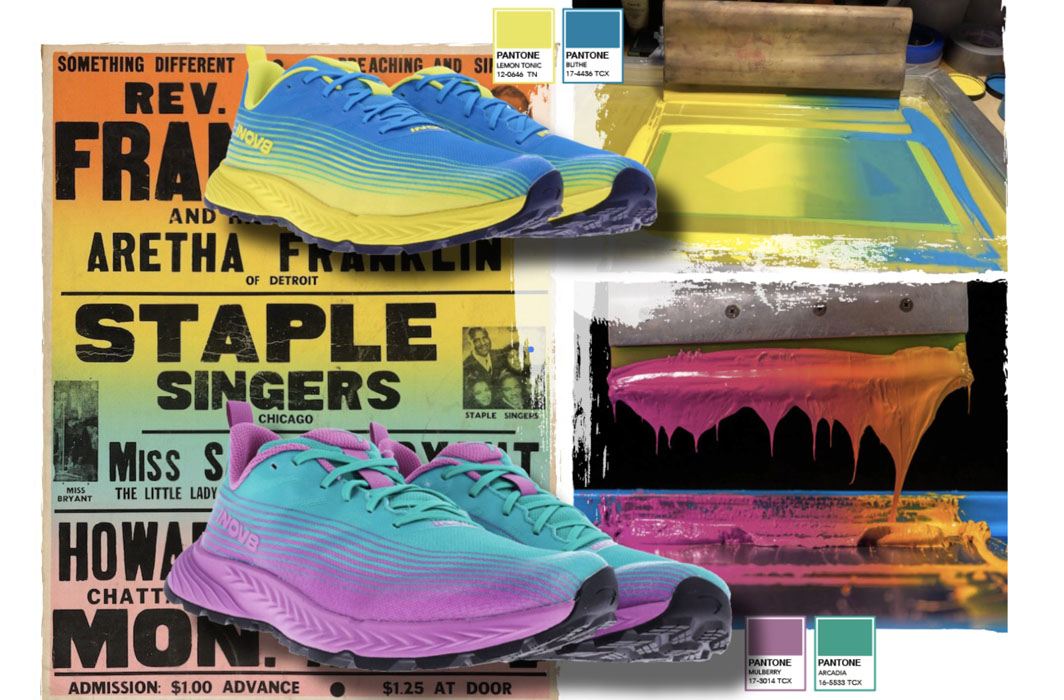
Bringing together everything we've learnt over the past two decades, the all-new TRAILFLY Series boasts the biggest footwear design enhancements in our 20+ year history.
Featuring two radical hard-ground trail running shoes that share our carefully crafted new foot-shaped fit - as well as better-than-ever grip, cushioning, comfort and protection - the TRAILFLY Series is set to take 2024 by storm.
The two shoes are called the TRAILFLY and the TRAILFLY SPEED. The Speed is slightly lighter than its already lightweight sibling, which has extra cushioning.
In this blog post we're going to sharpen our focus on the TRAILFLY SPEED and take you behind the design of this game-changing new shoe in a Q&A with our Senior Footwear Designer Luke McConnie.
1. How long did the TRAILFLY SPEED take to design? Where did you start the design process and what sequence did you follow?
The design process for this shoe spanned almost two years. It commenced with the creation of a new 'last '(a foot-formed mold used in crafting the shoe). This is a critical element in footwear design that defines the shape and structure of the shoe. Following the establishment of the last, our focus shifted to the outsole and midsole design, laying the foundation for the shoe's overall comfort, grip and performance.
After finalizing the sole components, the design team proceeded to work on the upper design. This phase involved crafting the aesthetic elements, materials, and construction of the shoe. As numerous components were intended for use across several styles, adopting a sequential design approach—from last to sole to upper - was crucial.

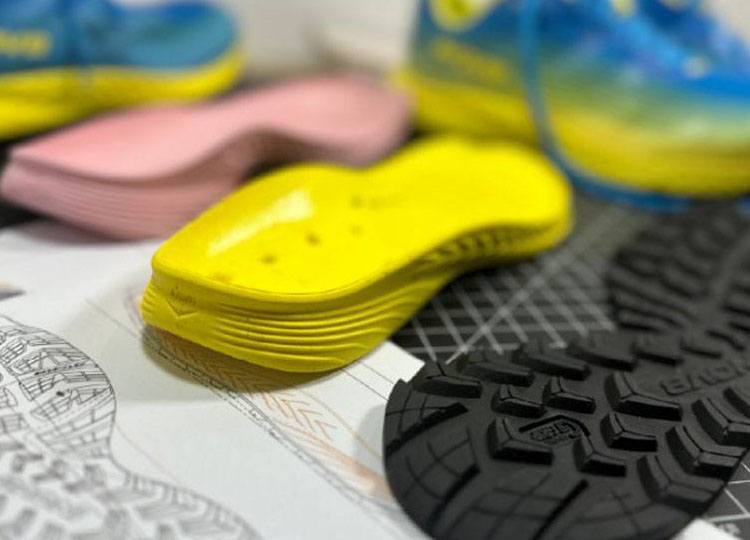
2. There is so much newness on the TRAILFLY SPEED, what is your favourite new part of the design and why?
Besides the innovative tread design, my favourite aspect of the TRAILFLY SPEED's new design is the bold use of colour. The decision to use two contrasting colours adds a dynamic and energetic look to the shoe. This intentional colour choice not only catches the eye but enhances its speedy aesthetic.
3. The TRAILFLY range has proven hugely successful in recent years. How much does this new shoe mirror the design characteristics of those before it?
As with previous TRAILFLY iterations, the new TRAILFLY SPEED and TRAILFY shoes also feature a 4mm lugged outsole optimised for hard-packed trails, whether that be in wet or dry conditions. The biggest difference is the new anatomical fit, that hugs the natural curves of the foot, locking in at the heel and widening at the toes.
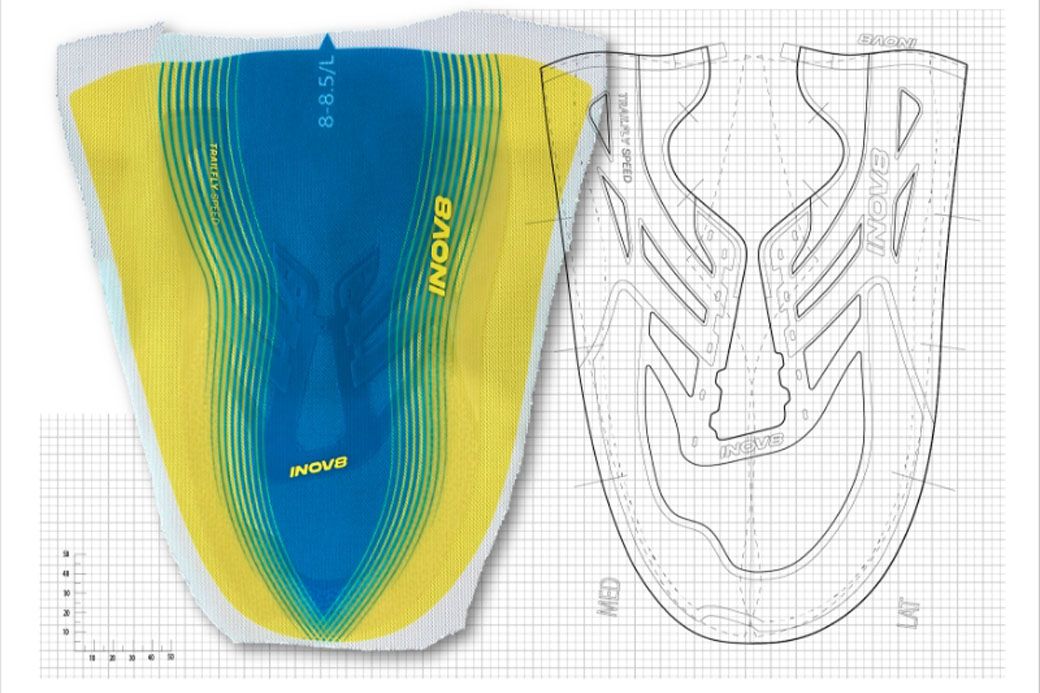
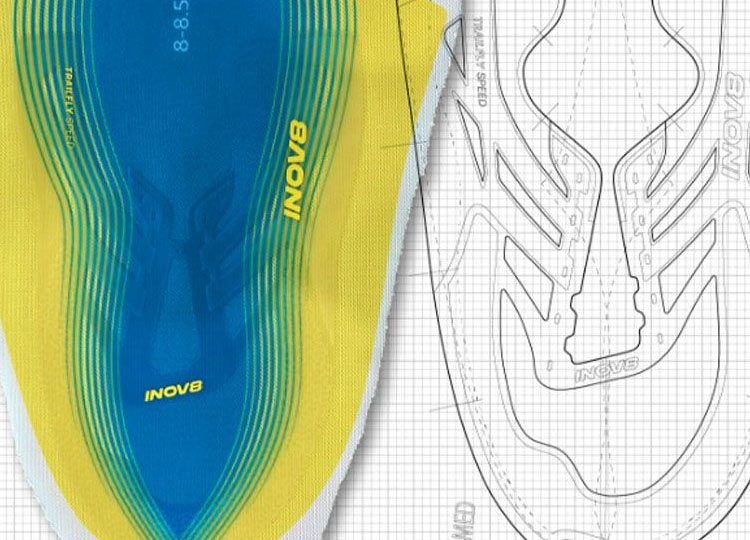
4. Any shoe that has SPEED in its name suggests it will feel fast. What went into the design, or what was taken out of the design, to make it feel fast?
Although it might sound cliché, the design's primary emphasis was about streamlining its construction to its essential elements — a concept I refer to as purposeful minimalism. Through several rounds of testing, we pinpointed the minimal level of protection required, allowing us to fine-tune the design for a lightweight, nimble, and flexible experience. However, finding the right balance is crucial, as creating a lightweight and deconstructed shoe can potentially conflict with the shoe's longevity. Durability is a quality we seriously prioritize.
5. Tell us a bit more about the foot-shape fit design. What differences can runners expect to feel versus other TRAILFLY shoes already in the range?
The TRAILFLY franchise has always provided a spacious fit. Yet, through the refinement of the last shape — a process involving numerous handcrafted iterations — we achieved a more anatomically precise fit.
While customization for each unique foot is not economically scalable, currently, an anatomically shaped last is a significant improvement versus conventional last shapes. The toe-box facilitates increased toe splay, ensuring ample room while maintaining a secure midfoot lockdown. Furthermore, the heel cup is specifically designed to lock-in and prevent any slipping.
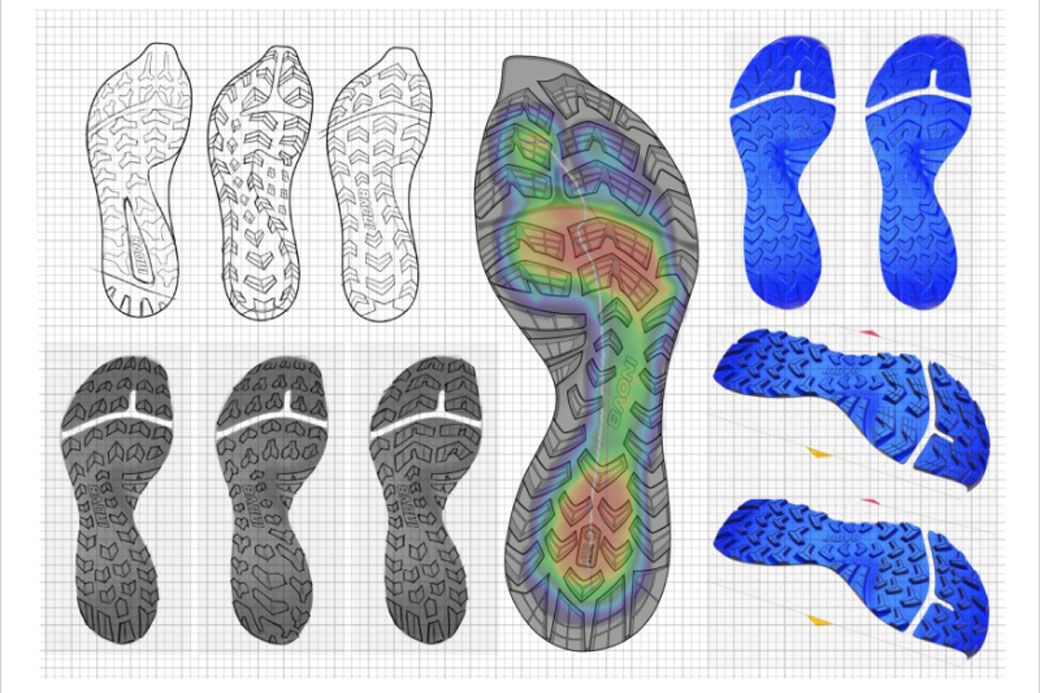
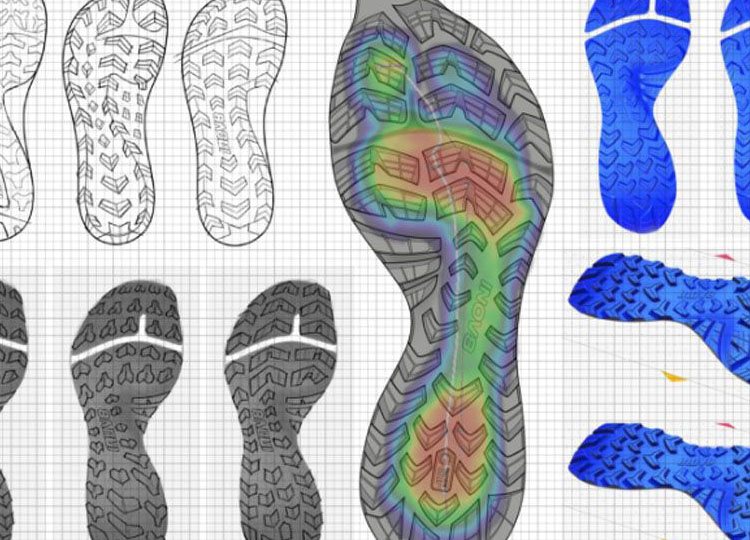
6. For the MUDTALON SPEED upper design you took inspiration from geodesic structures. Did you seek inspiration from outside the running sphere for anything on the TRAILFLY SPEED?
Whilst working on the TRAILFLY Speed, I was learning how to print make at my nearby college. A technique I picked up called Split Fountain Printing became a strong inspiration for the colour direction on the shoes upper. This method involves using a tool called a squeegee to print two or more colours in a single pass through the mesh screen to create rainbow-like gradients of colour.
Split-fountain printing became synonymous in the 1950s and 1960s with the promotion of music concerts. Eye-catching posters, with their rainbow striping, proved to be effective and highly desirable forms of advertising. Popular names of the time, like Led Zeppelin, Bob Dylan and Jimi Hendrix sat in bold fonts atop these multi-coloured backgrounds.
7. What benefits are gained for the runner from a midsole foam measuring 11mm at the heel and 7mm at the forefoot?
The 11mm/7mm foam stack height provides just the right amount of cushioning necessary for shorter distances at high speeds. The TRAILFLY SPEED is positioned as an ideal choice for race days.
The overall stack heights (outsole + midsole + footbed) in this shoe are 22mm/18mm. The stack heights in our other new shoe, the TRAILFLY, are 29mm/23mm, with 18mm/12mm of midsole foam included in that.
8. People will naturally compare the TRAILFLY SPEED to the TRAILFLY G 270 V2. There is room for both in a runner's arsenal, right?
Yes! The primary distinction between the two shoes lies in their heel-to-toe drop. The TRAILFLY SPEED (4mm drop) has a slightly elevated heel which alleviates strain on the Achilles tendon during heel strike. The TRAILFLY G 270 V2 has a 0mm drop which promotes a more natural gait, contributing to the strengthening of various muscles, tendons, and ligaments in the foot.
The mega durable Graphene-Grip rubber used in the outsole has been improved to make it stickier on wet hard-packed trails.
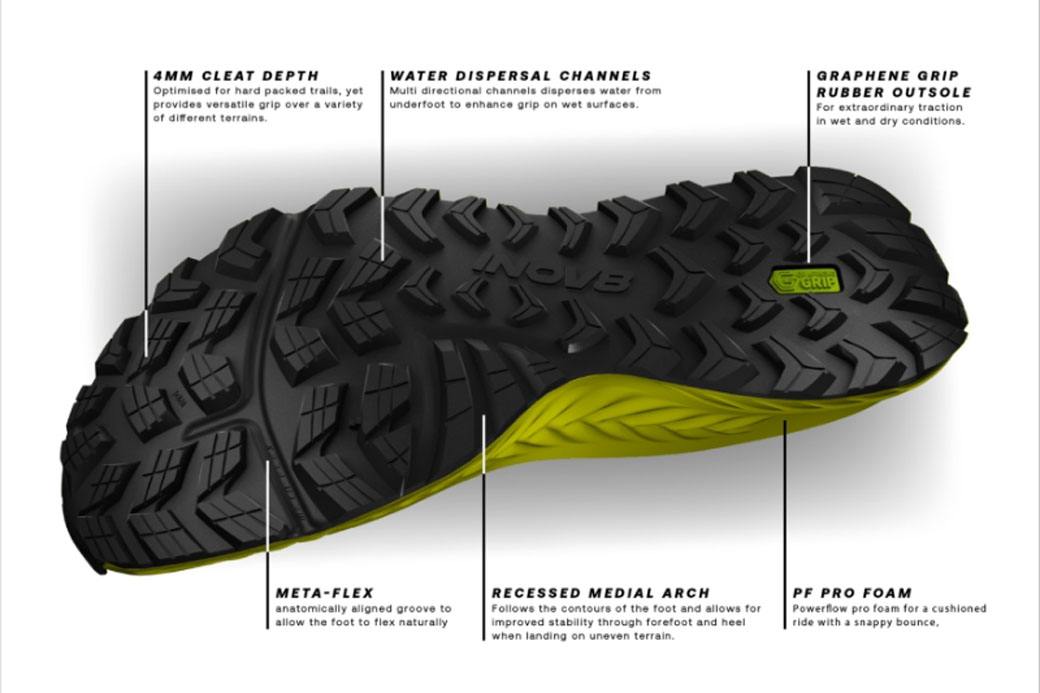

9. The outsole lugs are also shaped differently to any other previous shoe. How and why did you do this?
Beyond the rubber compound's performance, it's the lug design's size, shape, depth and orientation that determines how well a shoe grips. By analysing a diverse range of extensively tested shoes, we identified specific regions of the sole prone to wear. Armed with this information, we strategically repositioned and increased the surface area on several lugs to optimize grip.
Additionally, water dispersal channels were added to efficiently remove water from the sole's contact on wet and rocky surfaces. Furthermore, the sole profile was carefully aligned with the contours of the foot's anatomy to aid balance and provide a proprioceptive feel of the terrain.
10. The upper is very different, with a one-piece material and minimal overlays. What else can you tell us about the upper design?
The SPEED prioritizes flexibility with its reduced use of overlays, yet still retains ample support and protection, especially in the toe-box region. From an aesthetic standpoint, the intentional use of transparent overlays generates a clever visual effect, giving the illusion of a sleek and stripped-back design. Additionally, this allows the mesh colours to stand out and make a bold statement throughout the shoe.
11. Finally, for a bit of fun, what would win in a race - TRAILFLY SPEED or MUDTALON SPEED?
That's an easy one since the TRAILFLY SPEED has 'go-faster stripes.'
